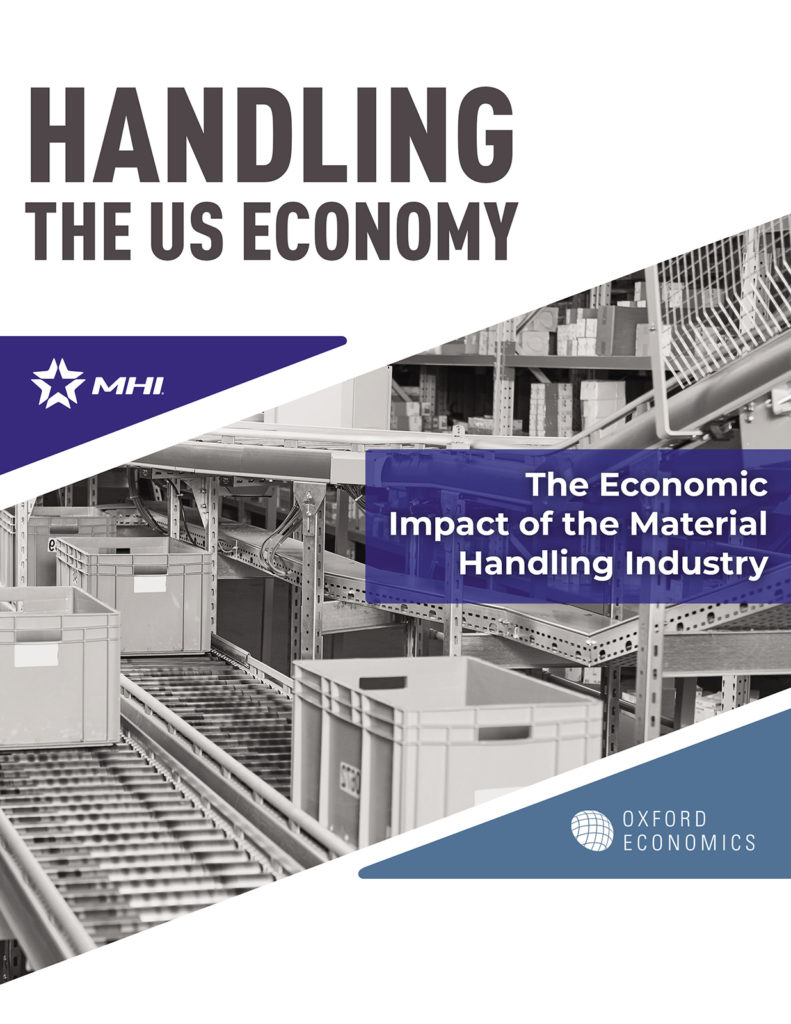MHI commissioned Oxford Economics to quantify the economic impact of the material handling industry through research, analysis and impact modeling.
By Heather Taylor, MHI Program Director, Market Intelligence

The economic contribution of the U.S. material handling industry in 2018 amounted to more than $173.2 billion in GDP, according to a recent economic impact study commissioned by MHI. The material handling industry is described as, “The industry that makes supply chains work.” Supply chains depend upon the efficient and cost-effective movement of goods to ensure that the right products are in the right place at the right time in the marketplace. Material handling provides the equipment, software and knowledge used to move, protect, store and control commercial goods within the supply chain.
As the largest trade association for the U.S. material handling industry, MHI is often asked to quantify the size and economic impact of the industry. Until now, there was no comprehensive economic data representing the diverse range of companies and job functions within the industry. To help answer this challenging question, MHI commissioned Oxford Economics, a leader in global economic forecasting and quantitative analysis, to quantify the economic impact of the industry through research, analysis and impact modeling. Using MHI membership as a framework for identifying the industry sectors and job functions within our industry, Oxford Economics quantified the economic contribution of the material handling industry in the United States and each state. In October 2019, the final report, “Handling the US Economy: The Economic Impact of the Material Handling Industry,” was released. Some of the key findings are highlighted below.
In addition to the GDP contribution of more than $173.2 billion, the material handling sector generated $39.3 billion in tax revenue at local, state, and federal levels. If the material handling industry was represented as a city, it would rank as the 21st largest metropolitan statistical area (MSA) in terms of GDP, falling between Charlotte, NC, and Portland, OR.
The material handling industry supported almost 1.6 million jobs in 2018. For each worker directly employed within the material handling industry, an additional 2.9 jobs were supported throughout the overall economy.
Workers in the material handling industry earned an average annual income of $73,900, which was well above the median income for most states. The manufacturing sector accounted for the largest percentage of workers employed in and supported by the industry, with 32% of total employment impact (direct, indirect and induced). The remaining 68% of jobs supported by the industry were in non-manufacturing sectors like trade, transportation and utilities, or professional and business services.
 MHI Solutions Improving Supply Chain Performance
MHI Solutions Improving Supply Chain Performance